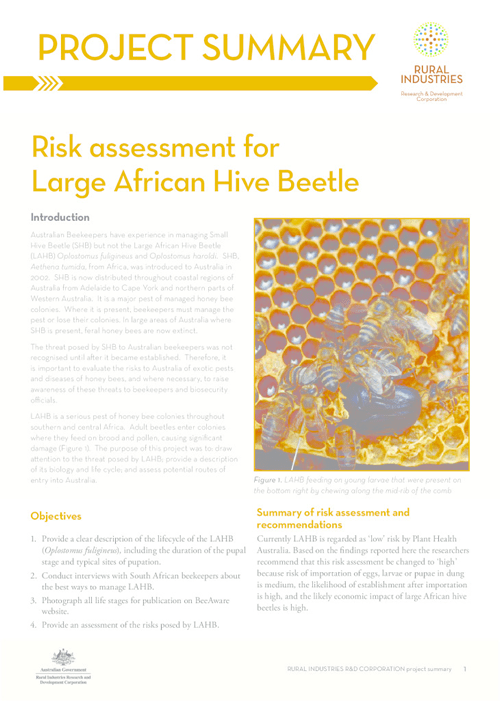Australian Beekeepers have experience in managing Small Hive Beetle (SHB) but not the Large African Hive Beetle (LAHB) Oplostomus fuligineus and Oplostomus haroldi. SHB, Aethena tumida, from Africa, was introduced to Australia in 2002. SHB is now distributed throughout coastal regions of Australia from Adelaide to Cape York and northern parts of Western Australia. It is a major pest of managed honey bee colonies. Where it is present, beekeepers must manage the pest or lose their colonies. In large areas of Australia where SHB is present, feral honey bees are now extinct.
The threat posed by SHB to Australian beekeepers was not recognised until after it became established. Therefore, it is important to evaluate the risks to Australia of exotic pests and diseases of honey bees, and where necessary, to raise awareness of these threats to beekeepers and biosecurity officials.
LAHB is a serious pest of honey bee colonies throughout southern and central Africa. Adult beetles enter colonies where they feed on brood and pollen, causing significant damage. The purpose of this project was to: draw attention to the threat posed by LAHB; provide a description of its biology and life cycle; and assess potential routes of entry into Australia.





